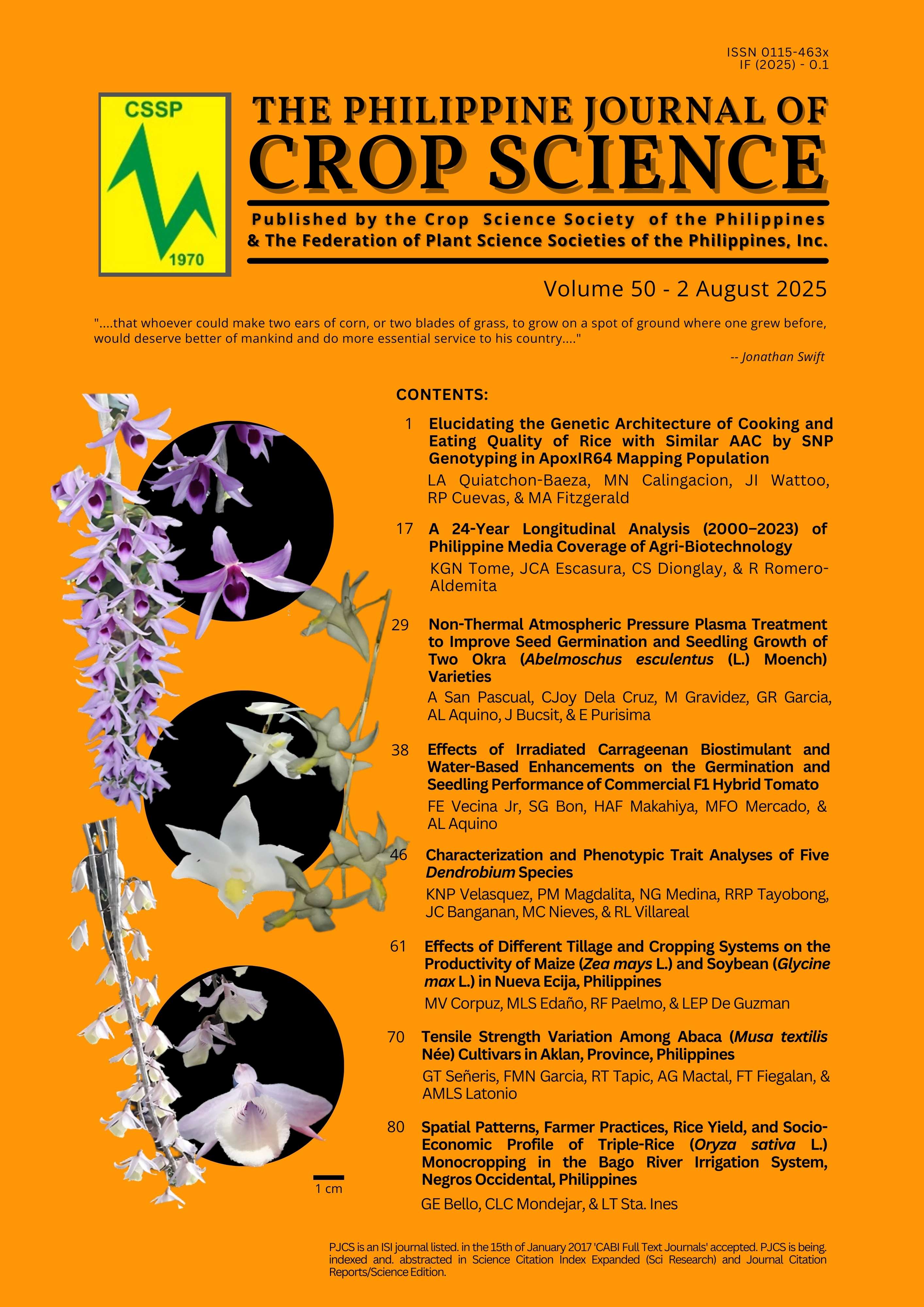A 24-Year Longitudinal Analysis (2000–2023) of Philippine Media Coverage of Agri-Biotechnology
Abstract
The media impacts public understanding of technology and motivates opinions on a number of controversial topics. To understand the media representation of modern biotechnology in the Philippines, a 24-year (2000-2023) longitudinal analysis was conducted covering 2,525 articles from the Philippine Daily Inquirer, Philippine Star, Manila Bulletin, and BusinessMirror. Results of previous analyses (2000-2009 and 2010-2016) were compared with the latest analysis that covered 286 articles from 2017 to 2023, particularly on the following variables: article type, section, topic and focus, source of information, framing category, keyword, and metaphors used, and tone of articles. Chi-Square Tests of Independence, Fisher's Exact Test, and Correspondence Analysis were used to examine the associations between various categorical variables in the 2017-2023 analysis, and trends of news coverage on agricultural biotechnology in four major Philippine newspapers were identified. The government has remained the top source of information cited in the articles since 2000. Public accountability/governance and social progress/economic development have continued as the top two frames used by the writers over the years. Genetic modification and biotechnology remained as major keywords used to refer to the technology since 2000. The use of fear-based metaphors has declined over the years. Articles from the Philippine Daily Inquirer shifted from generally negative to mostly neutral, while the articles from other newspapers were predominantly positive in the latter years. Of the four newspapers, BusinessMirror exemplified consistent and evidence-based coverage of the technology through the years. Statistical test results showed that the word GMO is the most used keyword across all tones, mostly for positive articles. Recommendations include continuous and quality engagements with media practitioners and key stakeholders, the formation of a fact-checking body to prevent the spread of misinformation, and the inclusion of other media channels in future research for a more holistic analysis.


